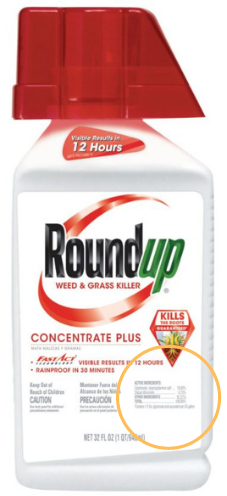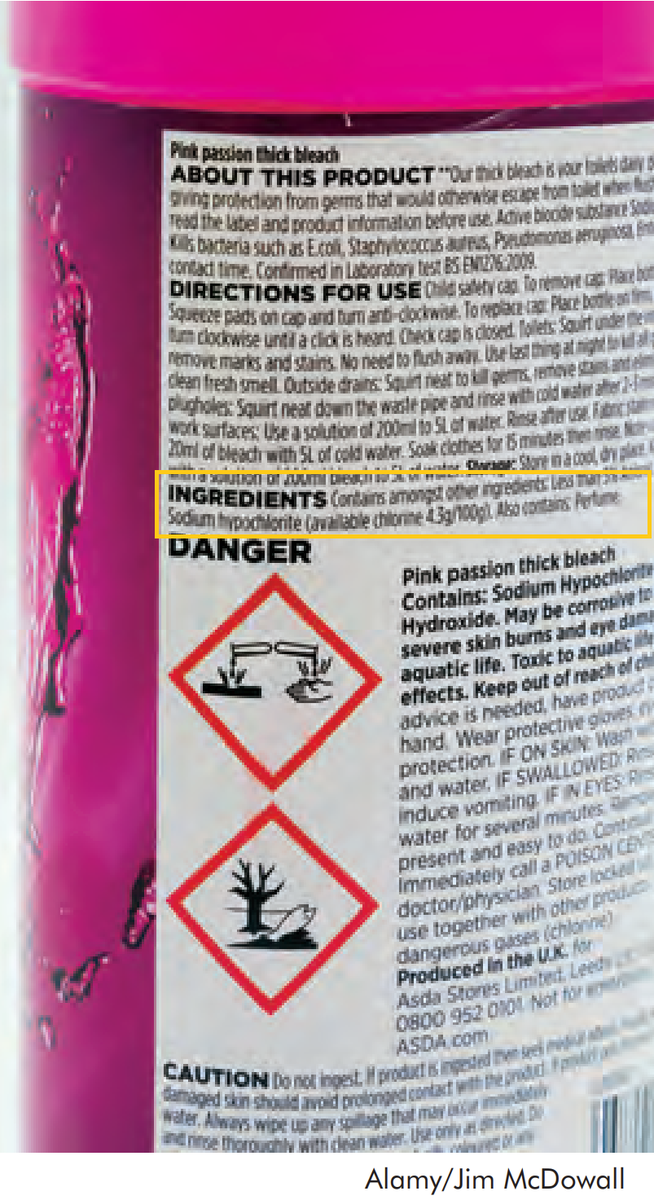Gateway on Pesticide Hazards and Safe Pest Management
How To Find Ingredients in Pesticide Products
Beyond Pesticides offers resources below to evaluate the health and ecological effects of specific chemical exposure from ACTIVE INGREDIENTS in pesticide products, as well as regulatory information and supporting scientific documents. Because various pesticide products can contain more than one active ingredient, it is important to READ the LABEL to determine chemical components.
With 192 different active ingredients and counting, it is essential to establish the connection between the use of these chemicals and their respective hazards.
View the step-by-step guide on how to search for the active ingredient(s) in pesticide products below:
- Go to U.S. EPA's Pesticide Product and Label System and enter the product name. The generic product name may vary.
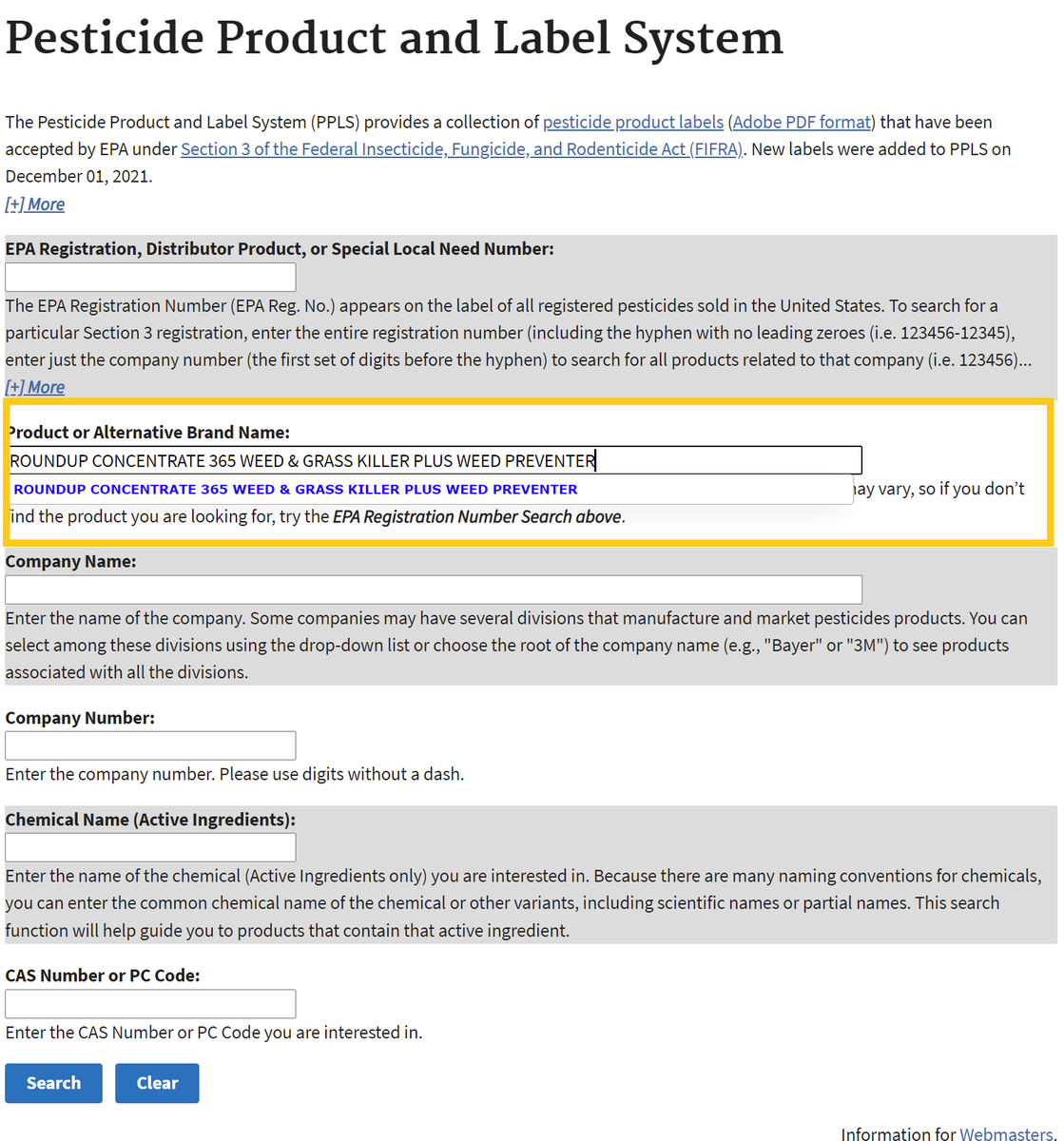
- After searching, click on the chemical ingredients tab or the link for the most recent label to find Active Ingredients.
Chemical List Label List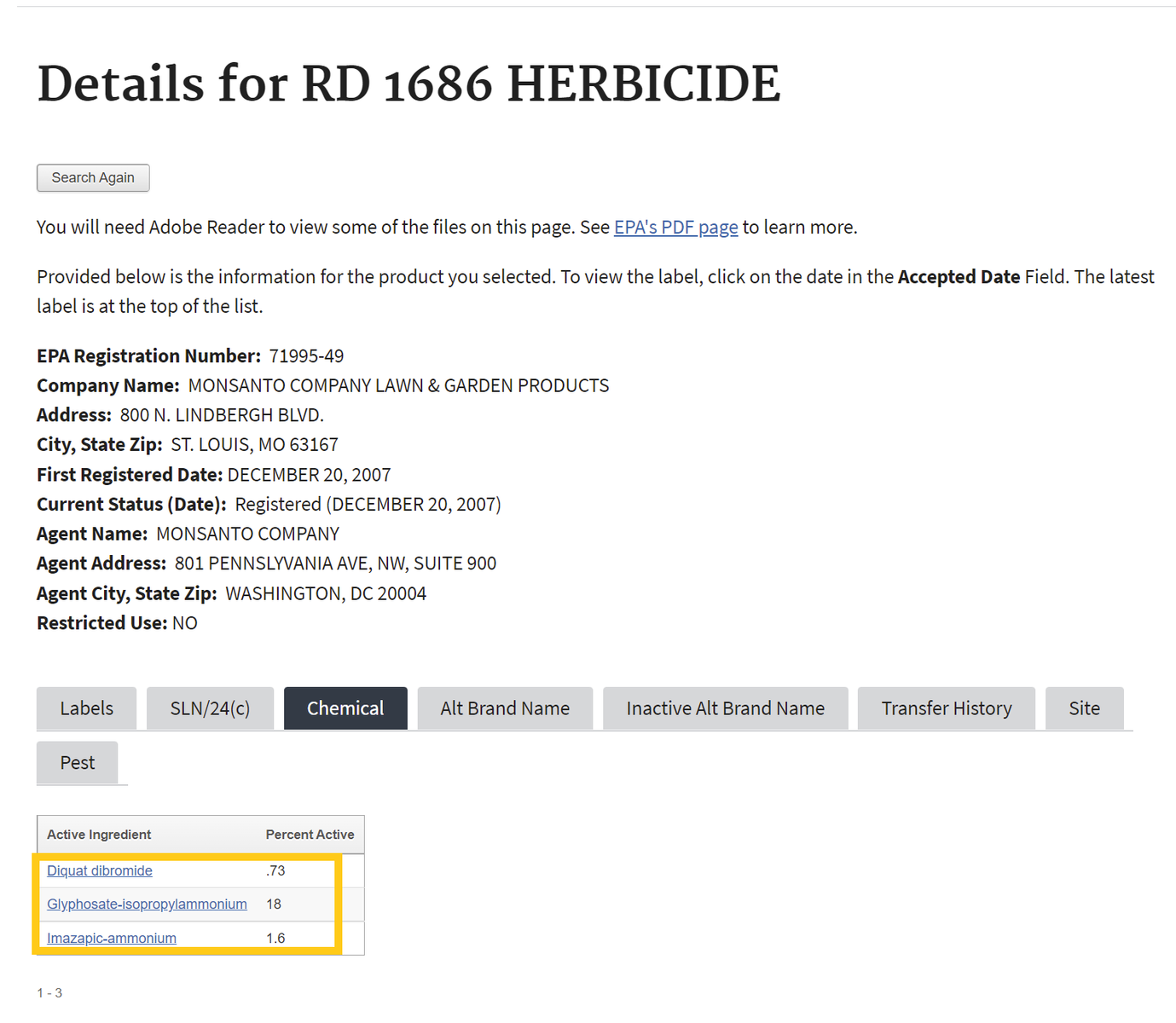
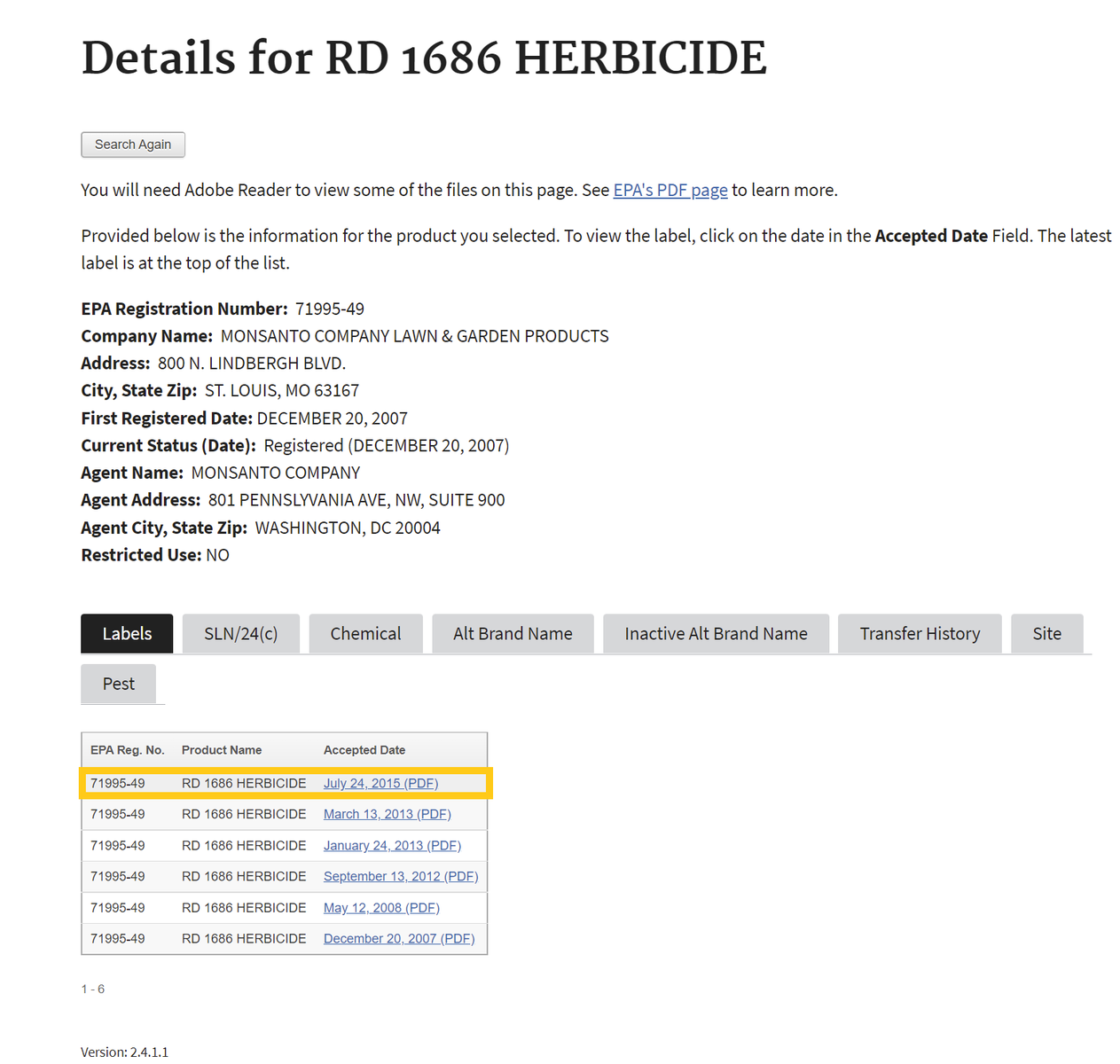
If one selects the chemical ingredients tab, skip to Step 4 . If not, proceed to step number 3 - To find the active ingredient(s) on the label, search for the page in the document containing the date of registration. Usually, the active ingredients section occurs within the first few pages of the label document.
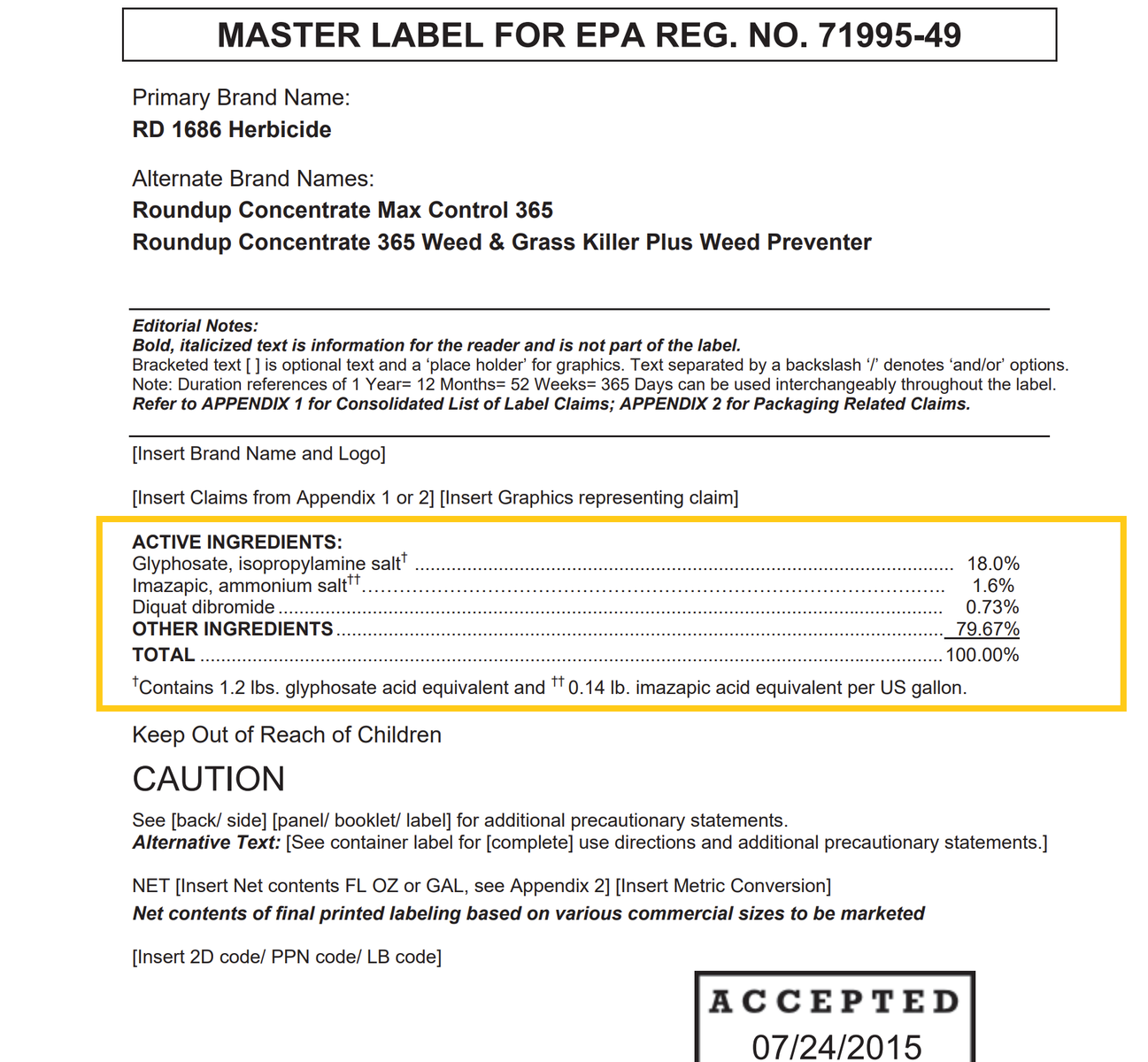
- Return to the Beyond Pesticides Gateway and search for the active ingredient name in the yellow box to the right or from the list below.
Methamidophos
General Information
- Product Names:
- Chemical Class: Organophosphate insecticide
- Uses: cotton, potato, tomato and alfalfa grown for seed for broad spectrum insect control, including aphid, Colorado potato beetle, green peach aphid, leafhopper, leafminer, lygus bug, stink bug, tomato pinworm and whitefly. Also used on peppers, strawberries, and squash grown in other countries and imported into the U.S.
- Alternatives: Organic Agriculture
- Beyond Pesticides rating: Toxic
Health and Environmental Effects
- Cancer: Not documented
- Endocrine Disruption: Not documented
- Reproductive Effects: Yes (4)
- Neurotoxicity: Yes (4)
- Kidney/Liver Damage: Yes (4)
- Sensitizer/ Irritant: Yes (8)
- Birth/Developmental: Not documented
- Detected in Groundwater: Not documented
- Potential Leacher: Not documented
- Toxic to Birds: Yes (8)
- Toxic to Fish/Aquatic Organisms: Yes (8)
- Toxic to Bees: Yes (8)
Additional Information
- Regulatory Status:
- EPA Reregistration Eligibility Decision (RED) (7/2006)
- Supporting information:
- Extoxnet Methamidophos Factsheet (Extension Toxicology Network)
- PAN Pesticides Database - Methamidophos (Pesticide Action Network)
- Studies:
- The Washington aerial spray drift study: assessment of off-target organophosphorus insecticide atmospheric movement by plant surface volatilization. Ramaprasad, J. et al. (2004) The Washington Aerial Spray Drift Study: Assessment of off-target organophosphorus insecticide atmospheric movement by Plant Surface Volatilization, Atmospheric Environment. Available at: https://www.sciencedirect.com/science/article/abs/pii/S1352231004005199.
- Proximity to residential and workplace pesticides application and the risk of progression of Parkinson's diseases in Central California. Li, S. et al. (2022) Proximity to residential and workplace pesticides application and the risk of progression of parkinson’s diseases in Central California, Science of The Total Environment. Available at: https://www.sciencedirect.com/science/article/pii/S0048969722079542.
- Child and adolescent mortality associated with pesticide toxicity in Cape Town, South Africa, 2010–2019: a retrospective case review. Davies, B., Hlela, M.B.K.M. and Rother, H.-A. (2023) Child and adolescent mortality associated with pesticide toxicity in Cape Town, South Africa, 2010–2019: a retrospective case review, BMC Public Health. Available at: https://bmcpublichealth.biomedcentral.com/articles/10.1186/s12889-023-15652-5.
- Pesticide exposure and sleep disorder: A cross-sectional study among Thai farmers. Juntarawijit, C. et al. (2025) Pesticide exposure and sleep disorder: A cross-sectional study among Thai farmers, Heliyon. Available at: https://www.cell.com/heliyon/fulltext/S2405-8440(24)17154-X.
- Assessment of genetic damage levels in agricultural workers exposed to pesticides in Paraíba, Brazil. Carvalho-Gonçalves, L. et al. (2025) Assessment of genetic damage levels in agricultural workers exposed to pesticides in Paraíba, Brazil, Environmental Toxicology and Pharmacology. Available at: https://www.sciencedirect.com/science/article/abs/pii/S1382668925000900.
- Cytotoxicity and DNA damage of five organophosphorus pesticides mediated by oxidative stress in PC12 cells and protection by vitamin E. Lu, X. T. et al. (2012) ‘Cytotoxicity and DNA damage of five organophosphorus pesticides mediated by oxidative stress in PC12 cells and protection by vitamin E’, Journal of Environmental Science and Health, Part B, 47(5), pp. 445–454. doi: 10.1080/03601234.2012.663312.








.png)
